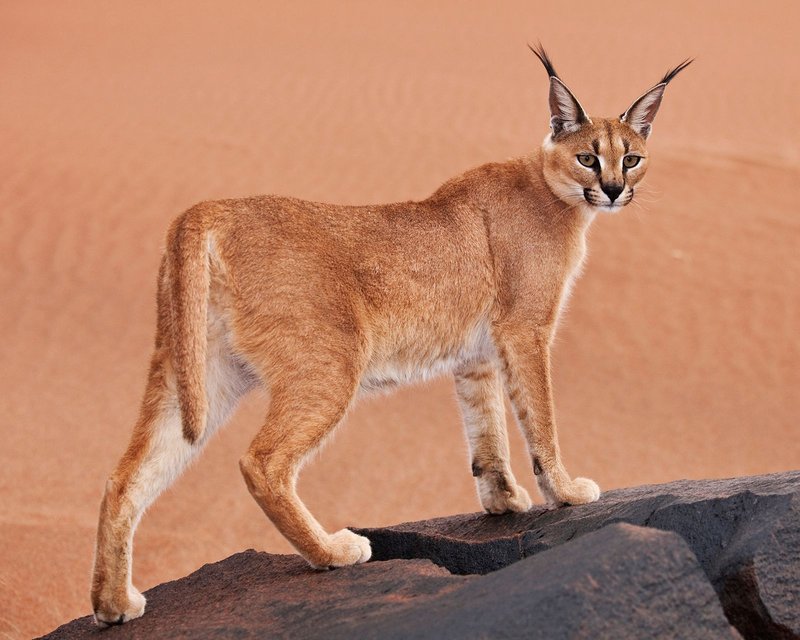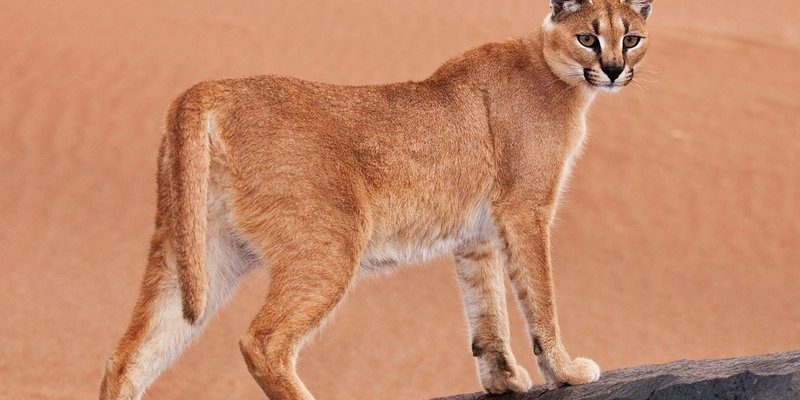
Caracals are fascinating animals, not just for their striking appearance—think tufted ears and golden fur—but for their incredible adaptability. Imagine being in a place where water is scarce, temperatures soar during the day, and the landscape is dotted with predators. That’s a typical day for a caracal. So, how do they make it through? Well, they’ve got a few tricks up their furry sleeves. Sit back with your favorite cup of coffee, and let’s explore the clever ways caracals survive in such harsh environments.
Physical Adaptations for Harsh Climates
Caracals are built for survival. First off, let’s talk about their body structure. They have powerful legs and strong muscles, making them agile hunters capable of leaping up to 10 feet high. This impressive height helps them catch birds mid-flight! Their thick fur coat, which is not just for looks, also provides insulation against the temperature swings typical in their habitats.
In addition to their physical prowess, caracals have features that help them conserve energy. They are primarily nocturnal, which means they do most of their hunting during the night. This behavior helps them avoid the punishing heat of the day and reduces water loss. By resting during the hottest hours, they save energy for when they can actively hunt and stay hydrated.
Moreover, their large ears aren’t just for show. These keenly tuned radar systems help them detect tiny movements in the grass, signaling potential prey. This adaptation is crucial when food is scarce. When you think about it, their physical traits perfectly align with their need to survive in a place where every resource counts.
Diet and Hunting Strategies
What do caracals eat? Here’s the thing: they are opportunistic feeders, which means they adapt their diet based on what’s available. Typically, they hunt small to medium-sized animals, like birds, rodents, and even small antelopes. Caracals are known for their incredible hunting skills. They’re not just good at catching prey; they also use strategic methods to ensure success.
One of their unique hunting strategies is called the “pounce.” Picture this: a caracal crouches low, its body tense with anticipation. When the time is right, it leaps into the air, aiming for its unsuspecting target. They can catch multiple birds in a single leap! This not only showcases their strength but also their ability to adapt to prey patterns and habitats.
In harsh environments where food can be sparse, this adaptability in diet is crucial. Caracals often hunt alone, relying on stealth and patience rather than pack tactics. This solo approach also means they can cover more ground in search of food, ensuring they find what they need to survive.
Water Conservation Techniques
Surviving in dry areas means water is often hard to come by. Caracals have developed some clever ways to deal with limited water supplies. They’re masters at conserving moisture. For one, their kidneys are highly efficient. They can filter out waste while retaining as much water as possible. It’s like having a perfectly tuned machine that minimizes waste, ensuring they stay hydrated even when drinking water isn’t an option.
Additionally, caracals get a lot of their hydration from their food. When they eat prey like rodents or birds, these animals contain a significant amount of water. Think about it—when we eat fruits or soup, we’re also getting hydration. Caracals use this same concept to their advantage.
By hunting effectively and choosing their meals wisely, they can thrive in an environment that would leave many other animals struggling.
Camouflage and Stealth
In the wild, blending into the environment can be the difference between life and death. Caracals have the perfect coat color for their surroundings—de hues of tawny and gold help them blend into the grasses of savannas and rocky terrains. This natural camouflage is essential for both hunting prey and avoiding larger predators.
When hunting, caracals use their stealthy movement to get as close to their prey as possible without being detected. They tread lightly, relying on the cover of tall grass or bushes to keep hidden. Once they’re close enough, they spring into action. This strategy allows them to maximize their chances of a successful hunt while minimizing the risk of being spotted.
You might be wondering how they also avoid enemies. Apart from their camouflage, caracals often choose their habitat wisely. They typically favor areas where they can escape to rocks or dense thickets if threatened, showcasing their skill in navigating their environment.
Social Behavior and Territory
While caracals are often solitary creatures, they can be social during the breeding season. Each caracal establishes its own territory, which can range from 20 to 50 square kilometers, depending on the availability of resources. They use scent marking to communicate their presence to other caracals. If you think about it, it’s like leaving breadcrumbs for others to follow—only way more fragrant!
Being solitary helps them reduce competition for food. However, during mating season, males will travel outside their territory to find females. Once they mate, the female takes on the responsibility of raising the young while the male returns to his territory.
This social behavior is not just about survival; it’s also a way for caracals to ensure their species continues, even in the toughest environments.
Impact of Climate Change and Human Encroachment
Unfortunately, even the most adaptable creatures face challenges as their environments change. Climate change and human activities are encroaching on the caracal’s habitat, affecting their survival. These changes can lead to loss of prey and suitable habitats.
Because caracals rely on specific habitats, ongoing development can squeeze them into smaller areas. When their territory shrinks, competition for resources increases, making survival even more difficult. This is a tough reality for these resilient cats.
Conservation efforts are essential to help protect their habitats and ensure they can continue to thrive. By understanding their lifestyle and the challenges they face, we can better appreciate these incredible animals and the role they play in their ecosystems.
Cultural Significance and Conservation Efforts
Caracals hold a special place in various cultures, often symbolizing strength and agility. In some regions, they are revered for their hunting prowess and adaptability. Educational campaigns and conservation programs have emerged to raise awareness about their importance and the threats they face.
Many organizations work to protect caracal habitats, promote coexistence with local communities, and educate people about their ecological roles. You might be surprised to learn that educating local communities about the benefits of keeping caracals in the ecosystem is just as important as direct conservation efforts. When people understand how these magnificent cats work within their landscapes, they’re more likely to support conservation initiatives.
Here’s the thing: each small action we take can add up to significant change. Supporting wildlife conservation efforts can help ensure future generations can continue to marvel at the resilience of caracals in their harsh environments.
In closing, caracals are a stunning example of how nature equips creatures to survive in the toughest conditions. By adapting physically, honing their hunting skills, and navigating their environments smartly, they manage to thrive where many others might falter. So the next time you hear about caracals, remember their journey and the clever ways they’ve learned to beat the odds. After all, survival in harsh environments is no small feat!

